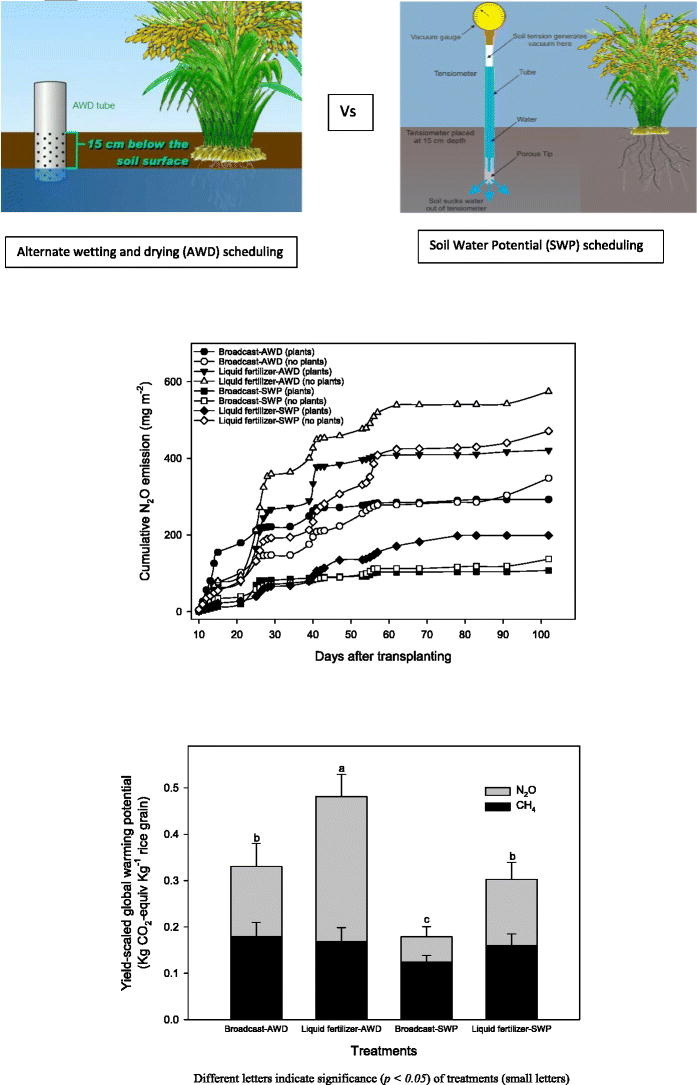October 15, 2020 | Science of The Total Environment | Source |
Introduction: Rice production in Asia accounts for 75% of the global supply but is highly vulnerable to climate change, with rising temperatures, altered rainfall, and increased weeds, pests, and diseases potentially reducing yields by up to 50% by 2100 without effective mitigation and adaptation strategies. Developing sustainable agronomic technologies is therefore crucial to enhance productivity and resource-use efficiency in rice farming. This study examined the effects of water-saving irrigation practices (safe alternate wetting and drying, AWD vs. soil water potential scheduling, SWP), land preparation methods (puddling vs. non-puddled reduced tillage), and fertilizer application techniques (broadcast vs. liquid fertilization) on water-use efficiency, GHG emissions, and rice yield. Conducted in the Philippines by researchers from Wageningen University, the University of Copenhagen, IRRI, and ACIAR, the randomized complete block experiment included eight treatments combining the above three factors, with four replicates, to evaluate sustainable rice production practices.
Key findings: The results showed that Broadcast-AWD achieved the highest yield, 20% more than Liquid fertilizer-AWD, while Broadcast-SWP delivered comparable yields with 15% less water use. Liquid fertilizer under SWP showed lower yields due to nitrogen leaching and limited uptake, whereas reduced tillage under SWP saved additional water during land preparation. Methane (CHâ‚„) emissions were 73–86% lower in AWD and SWP compared to conventional flooded systems. SWP reduced CHâ‚„ emissions by 33% compared to AWD, aided by improved soil aeration and fewer flooding periods. Liquid fertilization lowered CHâ‚„ emissions by 25% under AWD and 21% under SWP. Nitrous oxide (Nâ‚‚O) emissions were higher in AWD due to aerobic conditions promoting nitrification, but SWP reduced Nâ‚‚O emissions by 64–66% through consistent soil moisture and minimized emission peaks. Overall, global warming potential (GWP) decreased by 51% under AWD and 76% under SWP, with Broadcast-SWP achieving the lowest emissions due to significant reductions in Nâ‚‚O.
This research concludes that improved water management and precise nitrogen application can minimize water use and reduce Nâ‚‚O and CHâ‚„ emissions with minimal impact on yield. SWP irrigation is a water-efficient, climate-smart method that reduces emissions through controlled aerobic-anaerobic transitions. Despite its higher initial costs and complexity, it delivers low emissions and yields comparable to AWD, making it a more sustainable option from this study. AWD, meanwhile, is a low-tech, cost-effective, and easily adaptable technique suitable for smallholder farmers. Further long-term studies under diverse environmental conditions, such as groundwater measurements, are recommended to fully assess these approaches.
Graphical Abstract






